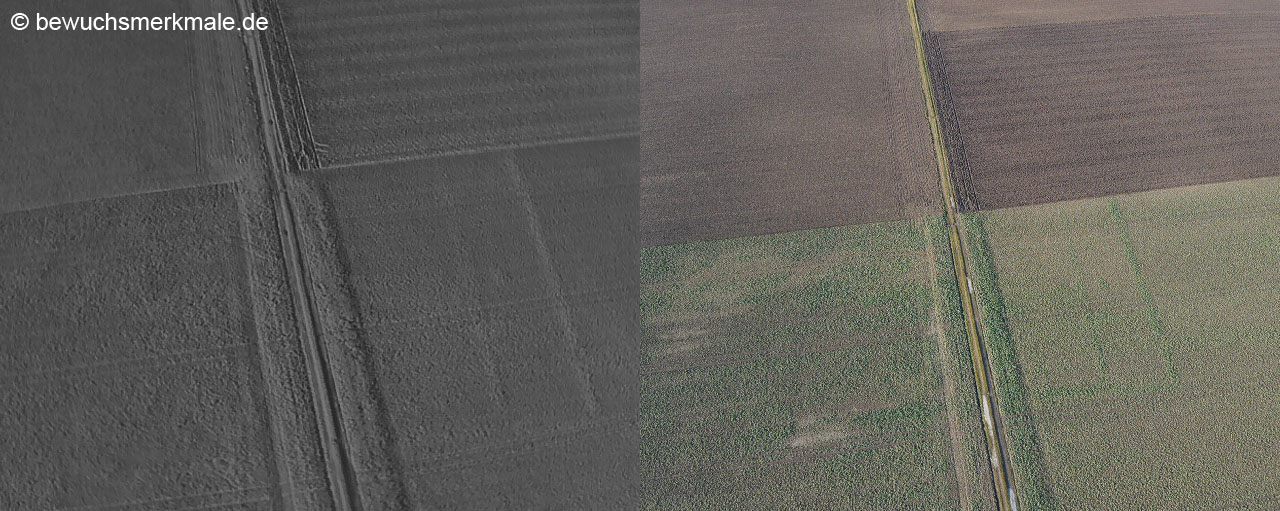Thermal characteristics and crop marks of oilseed rape in winter
Presumably caused by the mild autumn of 2022, the ditches of a long known, leveled, multi-phase Late Latène quadrangular enclosure already show positive crop marks in a field cultivated with rape in December 2022. During the flight on 27.12.2022 at about 10 o'clock the sun had already shone on this area for about 1 hour. At the time of the flight, the air temperature was 2°C, the soil temperature was about 4-5°C (measuring depth about 8 cm). There was a light wind with a wind speed of about 7km/h. During the night there had been a light night frost.
In Fig. 1, the clearly taller plants in the area of the ditches can be seen in the normal photograph in the field overgrown with rape to the right of the field path. Due to the low sun, these plants also cause a small cast shadow, which emphasises the linear structures even more. Interestingly, the field to the left of the field path, which is also cultivated with rape, does not show any clearly recognisable crop marks, although the ditches of the square enclosure continue here.
In the thermographic image taken at the same time, the taller plants stand out as bright stripes due to a higher temperature compared to the neighbouring plants. The assumption here is that these taller plants, due to their more favourable position in relation to the sun, were better illuminated by the sun and thus warmed up more.

In order to exclude the influence of the sun's heat radiation, another flight was carried out on 08.01.2023 at around 08:30, i.e. shortly before sunrise. The weather conditions were similar to the last flight, with an air temperature of -0.5°C and no wind.
In the normal photograph (Fig. 2) it is easy to see that the leaves of the rape plants are still slightly frosted. Despite the lack of shadows, the trench courses are more clearly visible than in the image from 27.12.2022. The continuation of one of the trenches into the neighbouring field on the left can also be seen. The thermographic image taken at this time is interesting: the trench courses can be seen as darker stripes, i.e. the taller plants are cooled down more than their neighbouring plants closer to the ground.

